Takács Zsuzsa: Hideg gyíkok • 3 Beteglátogatás • 3 Mi, akik nyaraltunk • 4 Győri László: Kereszt • 4 Ügynökök vonulása • 5 Szekeresek • 7 Beck Tamás: Egy eljövendő halálra • 7 Marianna mondja • 8 Bazsányi Sándor: „Így jött létre ez a könyv”. Kosztolányi Dezső Esti Kornéljának Első fejezete • 8 Kodolányi Gyula: Üzenetek W. Sh.-től • 26 Markó Béla: Travesztia • 27 Kerti Madonna • 28 Képzelem csupán • 28 Henry James: Az őserdei vad (II) (Szabó Szilárd fordítása) • 29 Szaniszló Judit: Megintapa • 38 Szőnyi Ferenc: Miféle Orpheusz • 63 A varjak majd helyetted is • 63 Ludens • 64 Sirokai Mátyás: Véletlen hírnök • 64 Szoborcsoport • 65 Oláh András: láz • 66 határeset • 67 Limpár Ildikó: Ima • 67 Szerelem • 69 Magyar László András: Nagyapám történeteiből • 72 Veres Bálint: Liszt Ferenc, a csöndes kivonulás prófétája • 75 Ébli Gábor: Nemzet + múzeum = Nemzeti Múzeum? Közgyűjteményi szerepek Kelet-Európában • 84 G. István László: Tizenhetedik védőbeszéd • 91 Tizennyolcadik védőbeszéd • 92 Németh Bálint: Míg szépen mondjuk • 92 Műbél • 93 Sántha József: Mikulás-temető • 94 FIGYELŐ Kőrizs Imre–Krupp József: Két bírálat egy könyvről (Grecsó Krisztián: Mellettem elférsz) • 101 Ludassy Mária: Elek emlékezik (Alexis de Tocqueville: Emlékképek 1848-ról) • 107 Csengery Kristóf: Barenboim Ringje – újra (Wagner: A Nibelung gyűrűje. A Bayreuthi Ünnepi Játékok ének- és zenekara. Vezényel Daniel Barenboim) • 112 Vörös István: Václav Havel (1936−2011) • 117
More...Illyés Mária: Illyés Gyula „Ítélet előtt” címû kiadatlan regénye elé. Előszó helyett • 1319 Illyés Gyula: Ítélet előtt (I) • 1321 Kemény István: A távoli Olümposz • 1339 Imre Flóra: Szerepkörök • 1341 Mária-siralom • 1341 Kovács András Ferenc: Világsziget, szigetlét • 1342 Németh Bálint: Koszosok • 1343 Szép utca • 1344 Táppénz • 1345 Csengery Kristóf: A fotós az erőmû körzetébe utazik • 1345 Samuel Johnson: Előszó Shakespeare mûveihez (1765) (II) (Gárdos Bálint fordítása) • 1347 Ludassy Mária: Rousseau politikai töredékei • 1361 Cseke Ákos: Az utolsó birodalom • 1366 Jónás Tamás: Borongó • 1378 PS • 1378 Nagy Márta Júlia: Hajnalkék • 1379 Gergely Borbála: Versek cím nélkül • 1379 Jassó Judit: Hozzáadott cukor nélkül • 1381 Vasárnapi ebéd szüleimmel • 1382 Perneczky Géza: A civil pápa • 1382 Lesi Zoltán: Boszorkánycipő • 1388 Pókok keresik • 1389 Handi Péter: Áthallás • 1390 Cigarettaszünet • 1390 Zentai Zoltán: Darvas Ferenc néhány oldala • 1391 Aczél Géza: (szino)líra. torzószótár • 1398 Szuly Gyula: Mi volt a múlt? • 1399 FIGYELŐ Lengyel András: A szodomai magányos (Kertész Imre: Mentés másként) • 1401 Steiger Kornél: Álarcos önarckép (Szilágyi János György: A tenger fölött. Írások ókori görög és itáliai kultúrákról) • 1407 Gálla Edit: Börtönvilág (Tóth Erzsébet: Kőrózsa) • 1414 Wilheim András–Margócsy István: Két bírálat egy könyvről (Temesi Ferenc: Bartók. Regény) • 1419 Marciniak Klára: Forradalmi design (Société Réaliste: Empire, State, Building) • 1429 Perneczky Géza: Az elárvult pszeudóról. Pauer Gyula (1941–2012) • 1433
More...Illyés Gyula: Ítélet előtt (IV) • 135 Takács Zsuzsa: Három vers Vágy egy antik kehelyre • 157 Ne tudja szokásaimat • 157 Meglepő lesz • 158 Imreh András: A költő • 158 Tokai András: Rímtelen gházel a türelemről • 160 Abba, hogy hetedike van • 160 Darányi Sándor: Pattra patt • 161 Unod vagy sem • 161 Márton László: A szerelem cselekményei. Gottfried von Strassburg „Tristan”-járól • 162 Ferdinandy György: Hazatérés • 177 Bán Zoltán András: Álmok a kanapén Cafatnyi honfoglalás • 179 A megregulázott zseni • 180 Dobai Lili: hol vannak hová • 191 a költészetről • 191 Novák Éva: Köszönet • 192 El • 193 Julian Barnes: Házasságvonalak (Vallasek Júlia fordítása) • 193 Hetényi Zsuzsa: Livsfrisen • 197 Dés Mihály: Annuntiatio, 1984 • 205 Ayhan Gökhan: Dal egy halott barátról • 220 Dialógus • 220 A boldogság következményei • 221 Bibó István és Marsovszky Miklós levelezése (Sajtó alá rendezte Bibó István [ifj.]) • 221 Beck Tamás: Alkonyi józanság • 239 FIGYELŐ Ferencz Győző: Körvonalak az episztemológiai ködben (Ágnes Lehóczky: Poetry, the Geometry of the Living Substance. Four Essays on Ágnes Nemes Nagy) • 240 Tarján Tamás: Az eltûnt labda nyomában (Kőrösi Zoltán: Az utolsó meccs) • 251 Lengyel Imre Zsolt: Homályból homályba (Györe Balázs: Barátaim, akik besúgóim is voltak) • 257 Visy Beatrix: A leleményes bûvészinas és az intermedialitás kora (Brian Selznick: A leleményes Hugo Cabret) • 261 Schneller István: Találtam egy könyvet (Batár Attila: Az emberi tér) • 266 Várady Szabolcs: Fischer Mária (1937–2012) • 269
More...Takács Zsuzsa: Madarak beszélgetése a kertben • 947 Szijj Ferenc: Fényleírás / Sötétség (3) • 947 Kozák Gyula: Vajda Júlia – Vajdáért (I) • 952 Molnár Krisztina Rita: Minden T. Anyeginnek • 972 Somogyi Aranka: Testmértan (Részletek) • 973 Németh Bálint: Kondenzcsík • 975 Egy szabadon kisajátítható mondat • 976 Horváth Péter: M. S. A bolond ingenárius • 977 Sántha József: Goethe Művek • 980 Tenigl-Takács László: „Csillagos pólyát kér üsző-Oroszország”. Egy Rilke-töredék távolságai • 986 Alberto Manguel: Hamis színben feltüntetni (Szilágyi Mihály fordítása) • 998 G. István László: Negyvenharmadik védőbeszéd • 1002 Negyvennegyedik védőbeszéd • 1003 Negyvenötödik védőbeszéd • 1003 Szerdahelyi Zoltán: Beszélgetések Hajnóczy Péterről Kovács Ágnessel • 1004 Nemes Z. Márió: „Valamit, ami élő, organikus, ábrázolni képtelenség”. Hajnóczy Péter nem higiénikus művészete • 1013 H. Molnár Ákos: Valamit visz • 1021 Lassú parázslás • 1022 Suhai Pál: Szemüvegre • 1022 Czilczer Olga: Én itt lent a műgyepen • 1023 Akkor hát • 1024 Solymosi Bálint: Urubu (Részlet) • 1024 Gál Ferenc: Ház körüli munkák • 1040 FIGYELŐ Visy Beatrix: (Angyal)szárnyak és más állítások (Gál Ferenc: Ódák és más tagadások) • 1042 P. Szűcs Julianna: Mi a magyar kép? (Hősök, királyok, szentek. A magyar történelem képei és emlékei) • 1046 Ujvárosi Emese: A rászedett szem (Nicolaas Matsier: 3D a festészetben – Trompe-l’oeil régen és most) • 1050 Szigethy Gabriella: Találtam egy könyvet (Horváth Judit: Pince) • 1054 Kőrizs Imre: Latin rulez! (Wilfried Stroh: Meghalt a latin, éljen a latin! Egy nagy nyelv rövid története) • 1061 A Holmi postájából Bánfi Tamás levele a szerkesztőség zárójegyzetével • 1063
More...Bodor Béla: „Menni!... És maradni” (Tandori Dezső: A Legjobb Nap) • 252 Márton László: Az elbeszélés mint kulissza (Dunajcsik Mátyás: Repülési kézikönyv) • 260 Nemes Z. Márió: A kínnal telt ház (Lovas Ildikó: Spanyol menyasszony) • 264 Perneczky Géza: A magyar fotóművészet emancipálódása (Szilágyi Sándor: Neoavantgárd tendenciák a magyar fotóművészetben 1965–1984) • 268 Antal László: Az organikus fejlődés jegyében. A rendszerváltás történelmi szemszögből és a mindennapokban (Kornai János: Szocializmus, kapitalizmus, demokrácia és rendszerváltás) • 288
More...In the paper the author makes an attempt to grab the relationship on its manifold scenes of two well-known public figures in the era of reforms in Hungary. The lives and the political careers of Count István Széchenyi and Lajos Batthyány have been discussed extensively in the literature, their careers, reform ideas and their relationship are well researched. The current analysis focuses on how their relationship was influenced by the the close social bond between them. Our primary source, Széchenyi’s diary and Lajos Batthyány’s very in-tensive, register-like appearance in it (“me in Batthyány’s home”, “Louis B. with us”, to-gether with Batthyány “at C[aroline] Károlyi”) suggest that the main scene for their rela-tionship was the triangle of the Batthyány-Széchenyi-Károlyi residences. That is, these three magnate salons, influential both in Pozsony and in Pest, provided the framework for their meetings. This circle of magnates was open and politically committed, while retaining as a characteristic feature its social identity, typical of contemporary aristocracy. The members spoke mostly in German and French, spent the time at balls, soirés, dinners and other social events, and paid visits to each other. This social space made the relationship of Széchenyi and Batthyány complex. On the hand, they both felt attracted to Karolina Zichy, a lady in the company, who was Lajos Batthyány’s sister-in-law. In their most private life, this made them rivals and confidants at the same time. On the other hand, Lajos Bat-thyány’s role as the leader of the reform opposition in the country weighed on their rela-tionship, especially as the Zichy ladies in his company (his wife and his sister-in-law) took up a role in the opposition, which was reflected in their social life. Their salon became the main channel of communication for the reform opposition. István Széchenyi, on the other hand, were dragged into a pro-government role after 1842, and accepted an office in 1845. And even though he did not really feel confident in this role this led to dissonance between them. The banters and sarcastic ripostes led to growing tension, quarrels and occasionally serious conflicts almost ending in duels. But the fact that, despite their disagreements, they belonged to the same society became a bridge between them: they could more deeply un-derstand each other’s political dilemmas. The analysis of the interactions shows that while it was politics that most fundamentally influenced their relationship, the world of societies as well as their social and private circles also had an effect on it.
More...
Keywords: Tatar; Chuvash; Bulgar; Mordvin; Mari; Permic; Ugric; loanwords; chronology
In the article the full corpora of the Turkic borrowings in the Mordvin, Mari, Permic and Ugric languages were analyzed. Due to consonant and vowel correspondences in these loanwords it is possible to distinguish between several stages of loaning in the languages (except Ob-Ugric) and in some cases to specify the absolute and relative chronology.
More...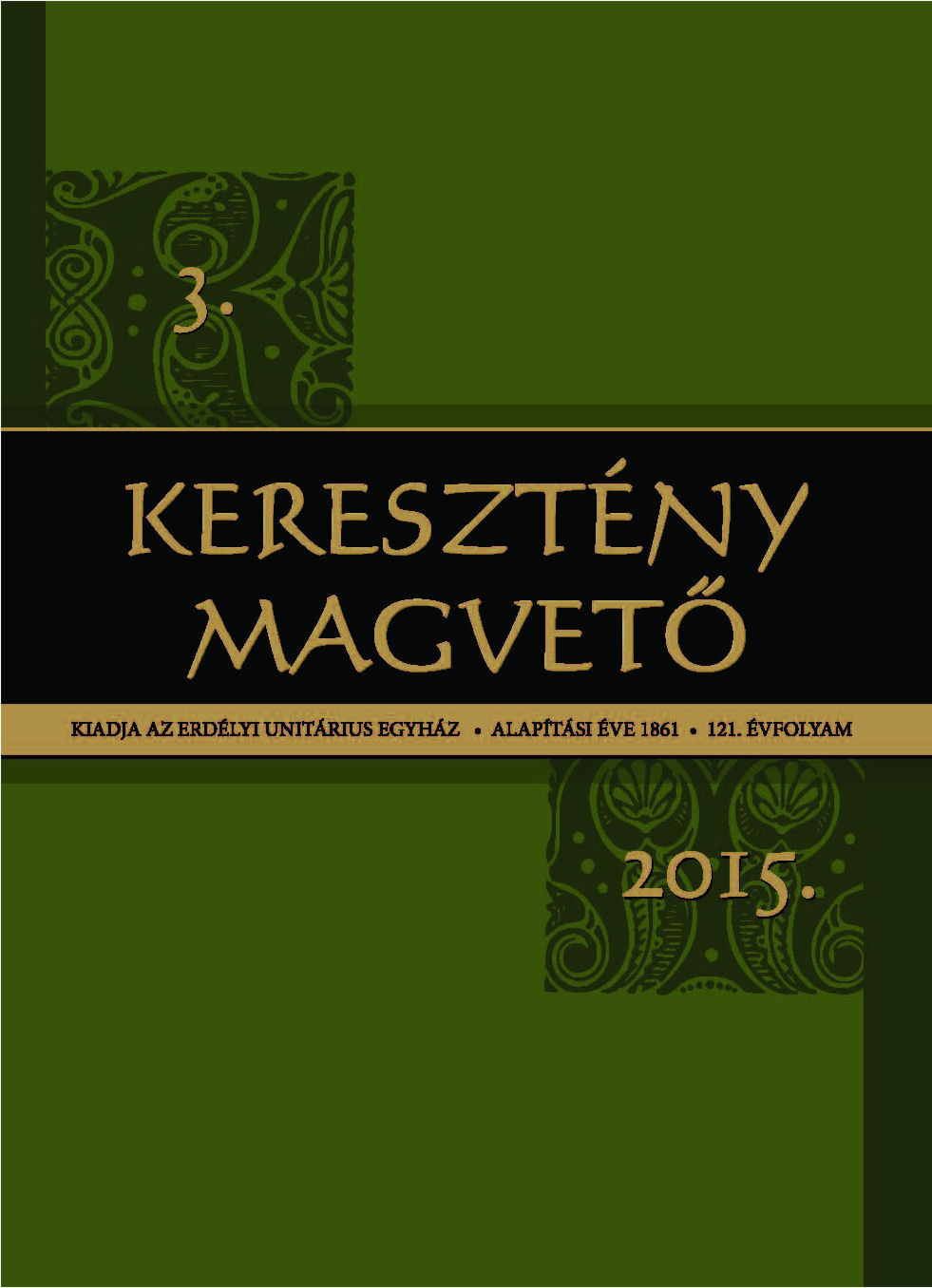
Keywords: Elek Kiss; Unitarian Church; war prisoner; Camp Frimley; World War I; George Kenner; journal;letters;
The First World War changed the destinies and crushed the careers of many foreign civilians who lived in Britain in 1915.Elek Kiss (1888–1971), the former bishop of the Romanian Unitarian Church, was among those civilians who were interned behind the barbed wire at the Frith Hill P.O.W. and Enemy Alien Internment Camp, at Frimley, in Surrey county.The camp, commonly referred to as Frimley, was a forty-acre outdoor camp housing civilians as well as Austrian and German prisoners of war. It was bisected by a public road, on one side the military prisoners, on the other side were the civilian internees. Elek Kiss, a Hungarian Unitarian student of Manchester New College, Oxford, was a civilian internee at Frimley in May and June of 1915.Among his comrades he mentioned in his journal the names of several German prisoners including many Jews.Kiss’s seventy-page archive contains the letters destined to his fi ancé. It is most probable that he never sent these letters, but kept them and brought them back aft er his release. Th ey then disappeared into oblivion for several decades until, fortunately, an anonymous person sold them to the Archive of theTransylvanian Unitarian Church.Th is paper presents a short introduction to the life of Elek Kiss and publishes his authentic Frimley letters. As far we know this is the sole Hungarian language documentation about the internees’ life at Frimley. The English language diary written by the well known painter George Kenner (1888–1971), who was an internee at Frimley at the same time, coincides in many aspects with Elek Kiss’s letters, both as a confessional and as a descriptive representation.
More...Keywords: 5th century;Hunnic Period;Gepidic Period;Middle Danube Region;continuity;female burials;burial practices;female dress accessories;female representation;artificial skull deformation;
The aim of this study is to investigate the transition between Hunnic and Gepidic period on the basis of female burials in the Middle Danube Region. The analysis of burial practices, female dress accessories and artificial skull deformation prove that there was a continuous cultural transformation during the 5th century, not a radical change. The power structure changed in the middle of the century but it didn’t cause the disappearance of the phenomena which formed from the beginning of the century. The new female representation that emerged after the end of Roman rule in the Carpathian basin can be widely observed from a geographical as well as from a social point of view. The early graves of the Gepidic cemeteries (Reihengräberfelder) fit perfectly in the general archaeological features of the 5th century.
More...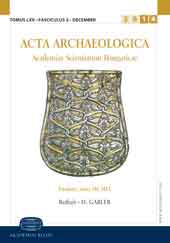
Keywords: Celtic elite; North Hungarian Celtic cemeteries; Balkan expansion;
In relation to socio-historical research of the last quarter of a century this study deals with the problem of Iron Age eastern Celtic elite. Although cemetery analysis can only provide evidence of restricted value, the excavations of almost fully explored north Hungarian necropolises (Ludas, Sajópetri) seem to indicate that in the period of the Balkan expansion (3rd century B.C.) members of the Celtic elite considered themselves mainly as warriors. The analysis has also shown regional differences between archeological sites..
More...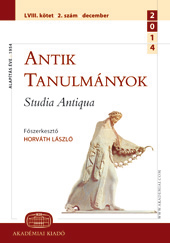
Keywords: Emil Ponori Thewrewk; torture of animals; protection of animals; animal cults; totemism; transmigration of souls; animism; vegetarianism; ancient Greek legislators; Areopagus;
Emil Ponori Thewrewk, who is regarded as the first great figure and founder of classical scholarship in Hungary, is also the only Hungarian scholar who has ever written on the humane treatment of animals in ancient Greece. His predilection for the subject can be explained by the impact of an intellectual milieu on the minds of Ponori Thewrewk, his close relations, and his acquaintances. The argumentation used by all animal rights movements at the time, based upon the a minore ad maius principle (“he who is cruel to animals shall also be cruel to humans”), can be traced in Ponori Th ewrewk’s short article which makes a distinction between old naive religious beliefs leading to an abstention from animals and Athenian legal cases where cruelty to animals had been punished as a sign of a future inhumanity to fellow humans. In the first part of my study I shall try to explore Ponori Thewrewk’s personal inclinations for, and connections with, the animal movements of the time; then in the second part I shall go through all ancient motivations, religious as well as legal, mentioned by Ponori Thewrewk for treating animals well, in order to get a full picture of ancient Greek attempts at humane treatment of animals as seen by Ponori Thewrewk and his contemporaries.
More...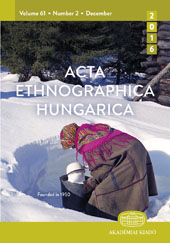
USE OF THE REPERTORY; BIBLIOGRAPHICAL DATA; SPECIAL ISSUES; CONTENTS OF VOLUMES; NAME INDEX; SUBJECT INDEX; GEOGRAPHICAL INDEX; REVIEW INDEX;
More...Keywords: Early Bronze Age; western Hungary; Gáta–Wieselburg culture; burials; copper and bronze metallurgy; relative and absolute chronology; socio-archaeological analysis
The 29 individuals found in 27 graves at Nagycenk were buried there in the time period between 2000–1700 BC, according to radiocarbon dates – i.e. at the beginning of the Middle Bronze Age in Hungary. The cemetery is of unique importance, both because of the richness of burial assemblages (altogether 30 bronze objects, 5 gold jewelries) and the scarcity of known Gáta–Wieselburg cemeteries. 15 percent of the ca. 180 burials in total, which relate to this culture in Hungary, are in this cemetery, and because of the few published burial sites, the cemetery at Nagycenk represents about one fourth of the materials published so far in the whole distribution area of the culture. Pottery style, typology and raw material of metal artefacts, as well as the radiocarbon dates (with the earliest among the published radiocarbon dates in context of this culture) support the dating of the cemetery section to the early phase of the Gáta–Wieselburg culture. The oval arrangement of burials around grave 55 and grave 1 suggest that each of these correspond to a household of high status men representing a few generations of the population living in the settlement excavated in the vicinity of Nagycenk.
More...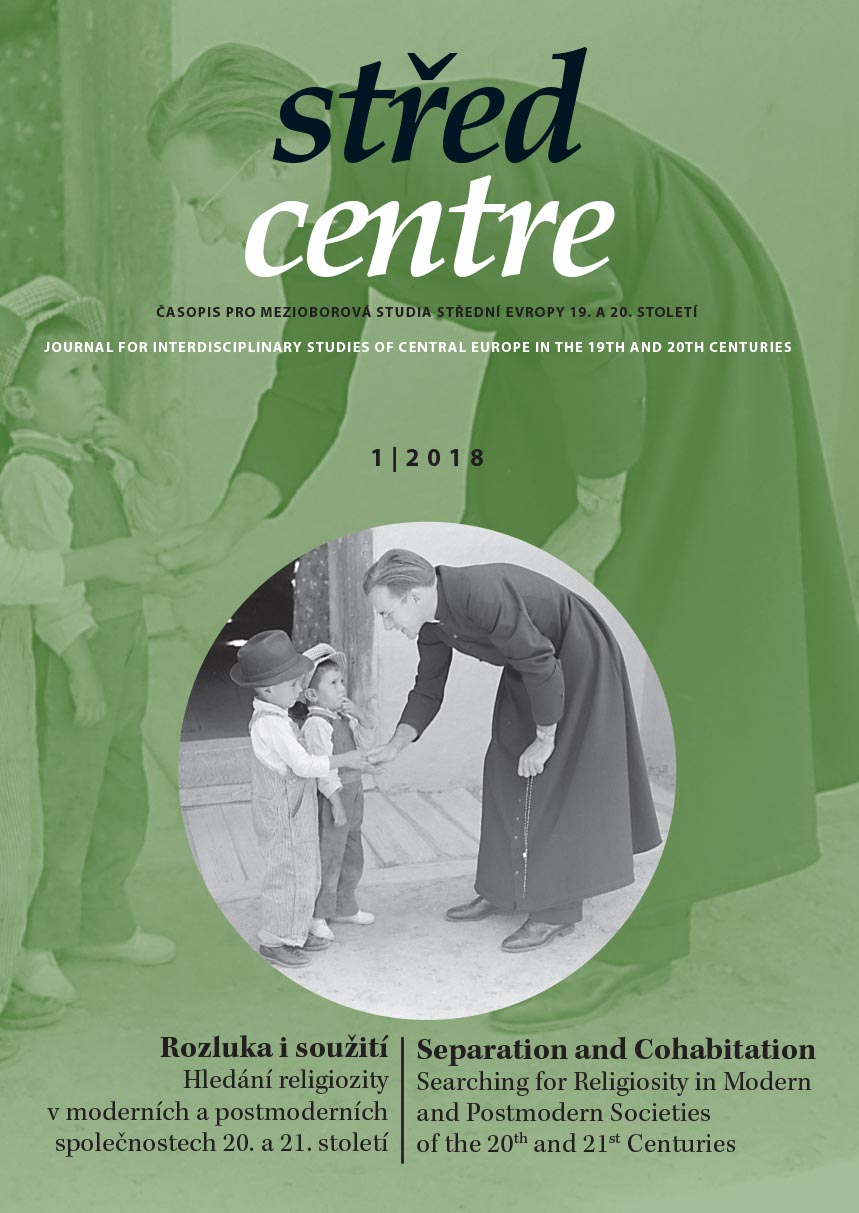
List of reviewed publications: VÍT SMETANA, Ani vojna, ani mír. Velmoci, Československo a střední Evropa v sedmi dramatech na prahu druhé světové a studené války, Praha 2016 MARTIN JEMELKA, ONDŘEJ ŠEVEČEK, Tovární města Baťova koncernu. Evropská kapitola globální expanze, Praha 2016 RAZ SEGAL, Genocide in the Carpathians. War, Social Breakdown and Mass Violence 1914–1945, Standford 2016 ANDREAS WIEDEMANN, „Pojď s námi budovat pohraničí!“ Osídlování a proměna obyvatelstva bývalých Sudet 1945–1952, Praha 2016 WOLFGANG GÖDERLE, Zensus und Ethnizität: Zur Herstellung von Wissen über soziale Wirklichkeiten im Habsburgerreich zwischen 1848 und 1910, Göttingen 2016 JIŘÍ HUTEČKA, Muži proti ohni. Motivace, morálka a mužnost českých vojáků Velké války 1914–1918, Praha 2016
More...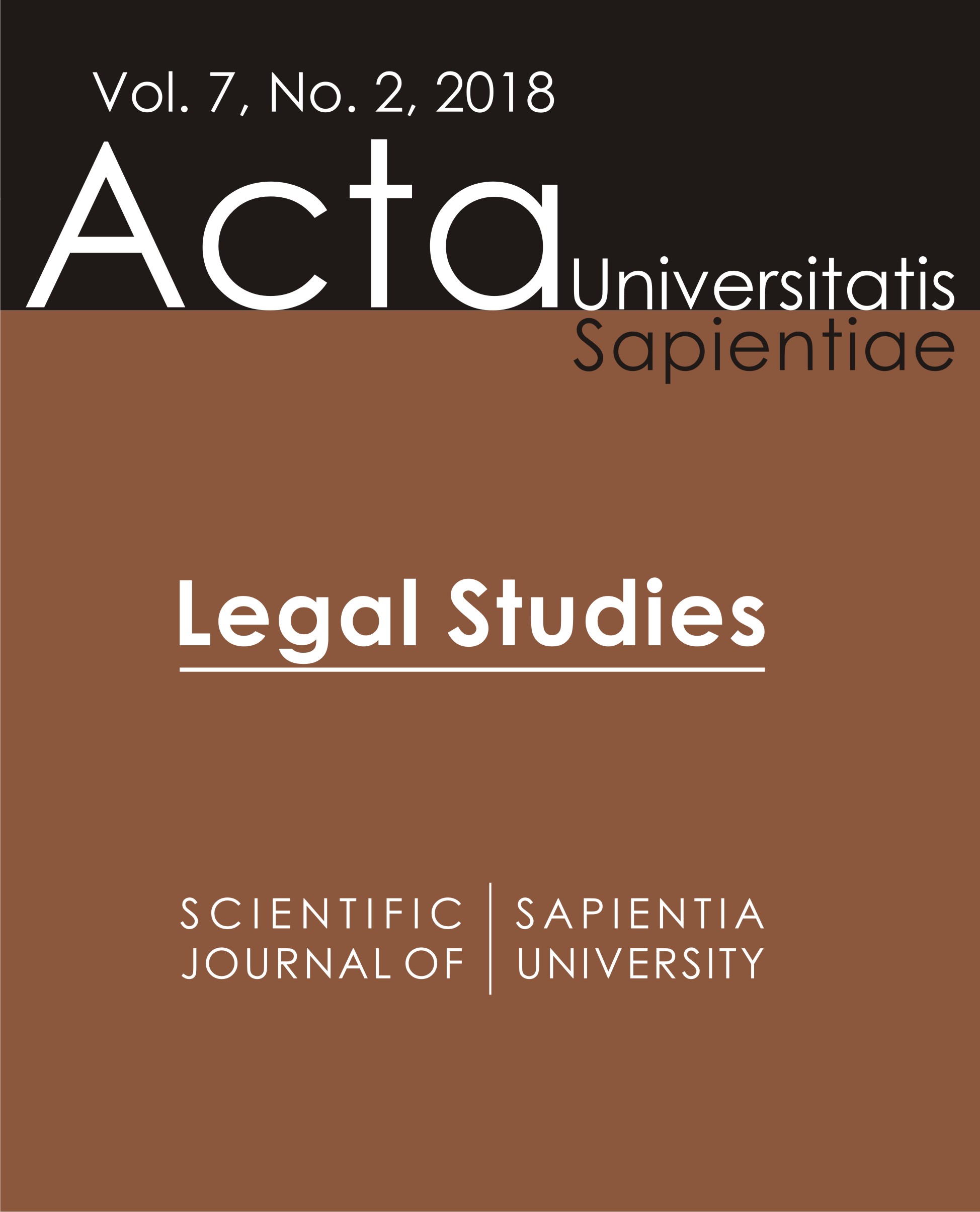
Keywords: minority rights; minority assimilation; resolution of Alba-Iulia; minority law in Romania; Hungarians in Transylvania;
The question of the situation of national minorities, and implicitly the status of the Hungarian minority are of continued timeliness in the Romanian legal environment. These questions are all the timelier in the year 2018, in the period of the 100-year anniversary of the formation of Greater-Romania. This writing attempts to present the evolution of the main questions of the legal regulation of minority rights in Romania and the answers given to those questions. The legal regime of minority rights proposed on the level of promises on principle at Alba-Iulia in 1918 is presented, as is the history of partial fulfilment and lack of fulfilment of these promises. The environment of legal regulations which constituted the foundation for the policy of assimilation during the inter-war period is presented, as is the detente following the Second World War, the short-term widening of minority rights, the ephemeral territorial autonomy granted to the Hungarian minority followed by the revitalization of oppressive regulation with the aim of assimilation. After the regime change of 1989 the question of minority rights regulation took a new turn in the context of Euro-Atlantic integration which however was not sufficient for the resolution of the situation of national minorities in Romania in a European spirit. The author demonstrates with demographic data the effects of the insufficiencies of minority law on the composition of the population according to different nationalities. As a conclusion it is stated that the regulation of minority rights shows a cyclical oscillation in the course of which the Romanian state, primarily as a response to international pressure, and always reluctantly is willing to improve on the situation of national minorities by means of legislation, while avoiding ensuring collective rights.
More...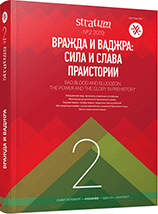
Keywords: Eastern Europe; Caucasus; Carpathian and Danube Region; Early Bronze Age; Maykop-Novosvobodnaya-Banyabik type axes; catalogue;
The author presents a database of Maykop-Novosvobodnaya-Banyabik type axes from the Caucasus and Trans-Volga to the Carpathian and Danube Region as of 2018. Barrows, settlements, and accidental discoveries are reported to yield the total of 249 axe tools and casting moulds. Each listed item includes site address, discovery circumstances and conditions, descriptions and measurements and weights of the axe finds, chemical compositions of metals and alloys, and detailed references. The catalogue is supplemented with a map of sites’ distribution and tables with pictures of all finds.
More...Keywords: bear ceremony; Khanty; perspectivism; paternalism; extractivism;
Hybridity is often discussed in connection with the postcolonial condition. The cultural revival of the Khanty bear ceremony in Western Siberia could be a perfect example. It is on one hand a key representation of local Indigenous ontology and on the other has become a token in cultural heritage preservation by state actors and a cultural commodity for local tourism and media outlets. Indigenous activists struggle against the loss of authenticity with ideas of purism and scholars identifying the amalgamation of Indigenous ritual elements with Christian ideas and inventions of tradition on the other hand. I argue that the perception of original purity of elements that develop into hybrid forms in the colonial and postcolonial context is somewhat misleading. Instead, I propose that we look at hybridity and purity as intertwined dialectical aspects of cultural politics with a multiplicity of voices and perspectives and negotiated relations at several levels.
More...Keywords: HUNGARY; ARCHDIACON OF SPLIT;
The article deals with the issue of an isolated view in the medieval historiography of the Latin cultural circle, the identification of Magyars as Massagetae. Operating within the established practice of their age, the litterati tried to determine the role played by emerging ethnic groups by applying methods based on principles of etymology and analogy. Thus they identified names of those ethnic units with the ethnonyms known to them from the Bible and ancient literature. In dealing with emerging ethnic units, earlier unknown, they followed the principle of the variability of names of the attested ethnic units. This principle was applied to Hungarians credited with emerging from Scythia and referred to in medieval sources as a gens ignota / exter(n)a. The identification of Hungarians with earlier known ethnic units was strengthened by terms used to describe them as barbari, pagani, infideles.
More...